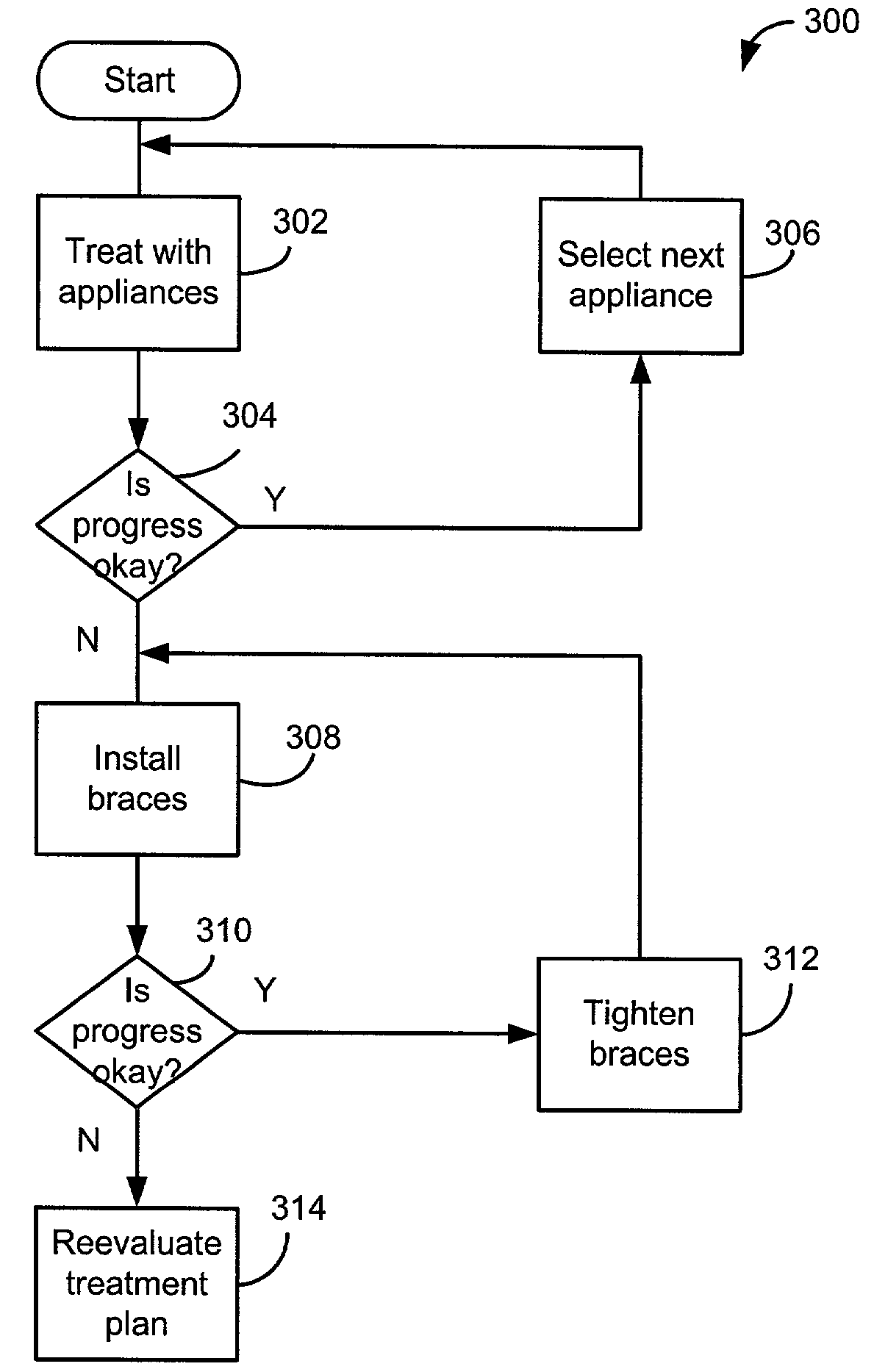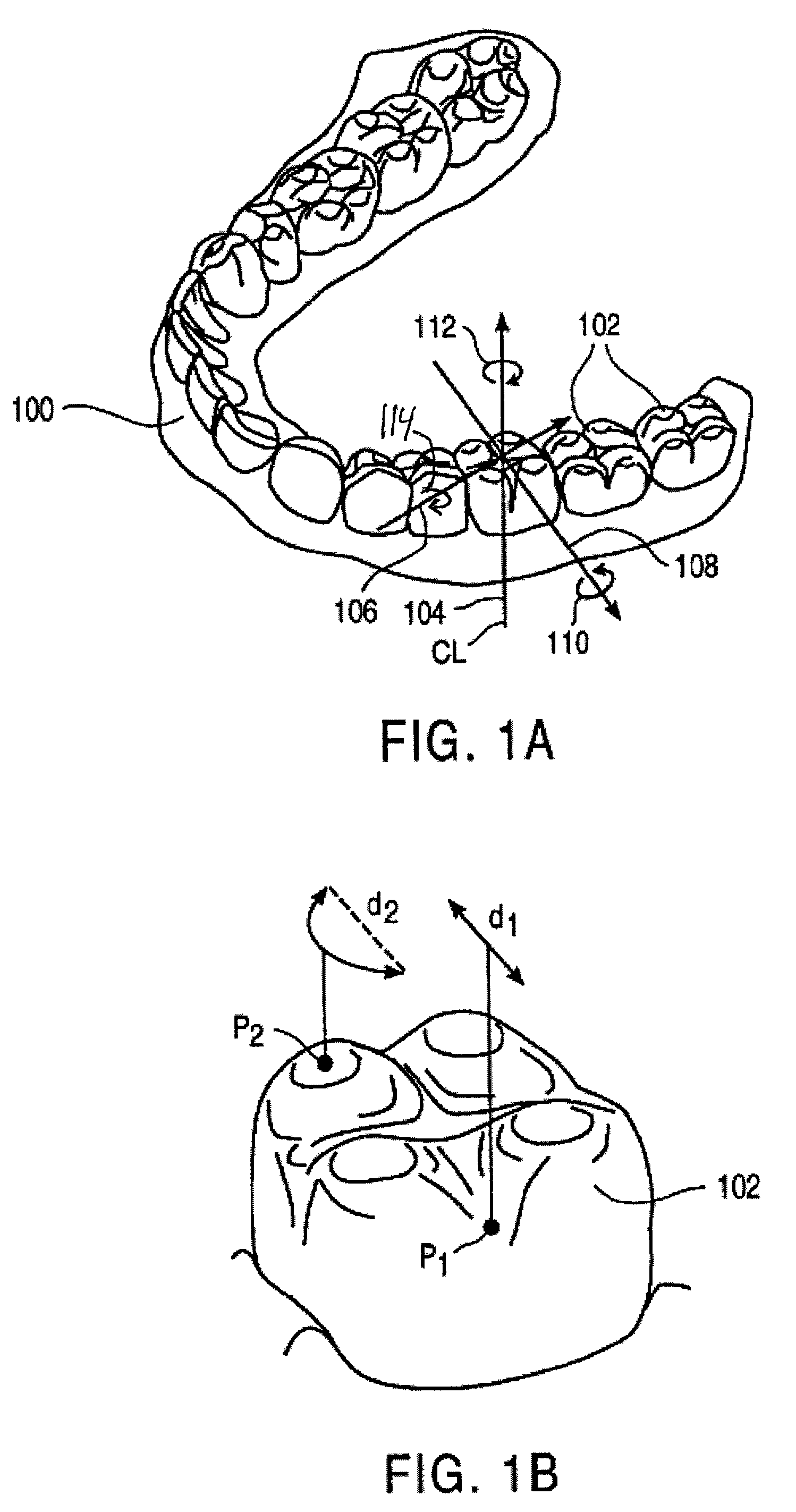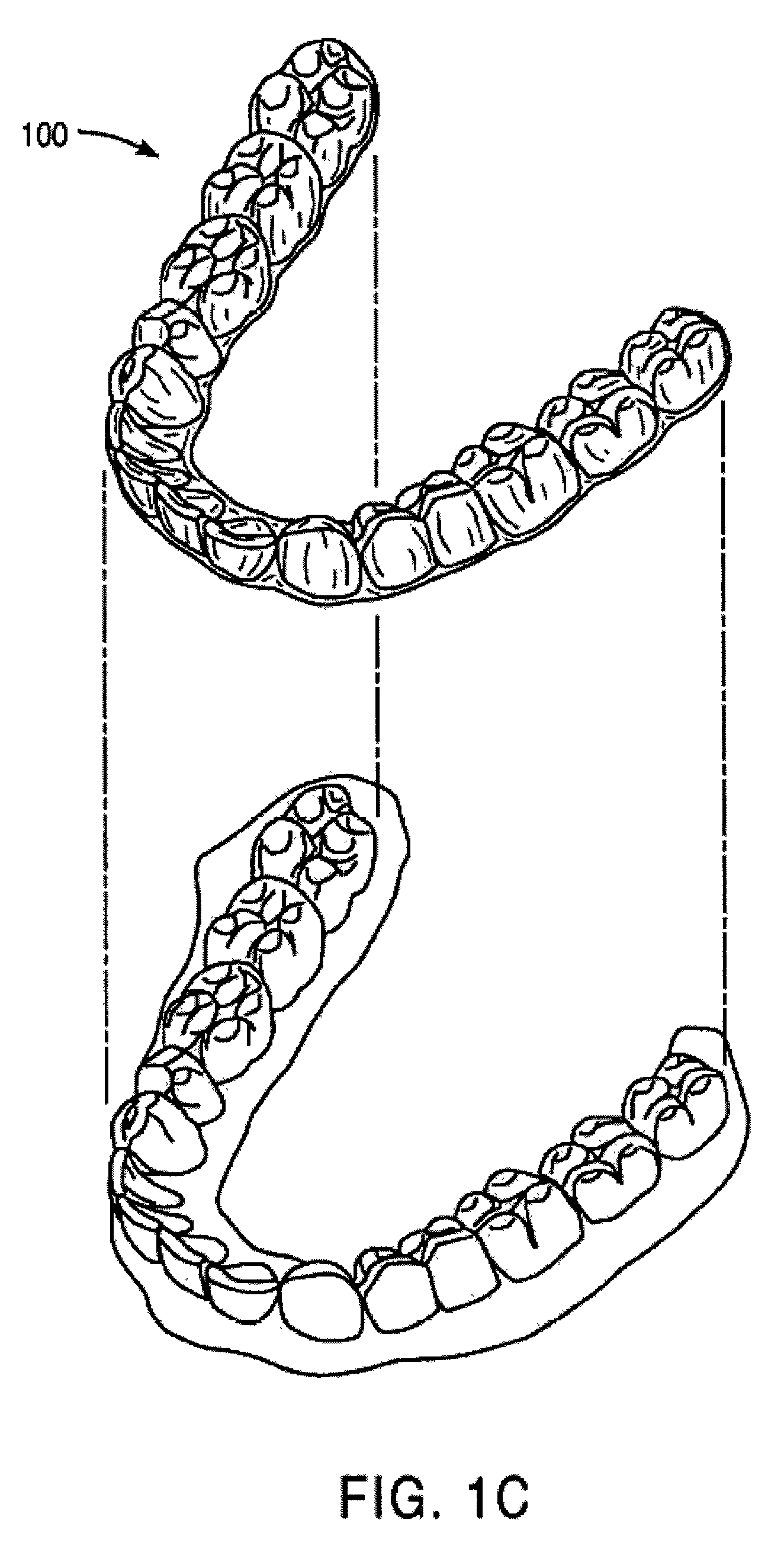Methods and systems for treating teeth
a technology for teeth and aligners, applied in the field of orthodontics, can solve the problems of inability to effectively treat malocculsions using removable aligners, unable to unable to achieve certain rotations, extrusions, etc., and achieve the effect of repositioning certain teeth, reducing the risk of infection, and improving the effect of treatment
- Summary
- Abstract
- Description
- Claims
- Application Information
AI Technical Summary
Benefits of technology
Problems solved by technology
Method used
Image
Examples
Embodiment Construction
[0037]According to the present invention, systems and methods are provided for incrementally moving teeth using a plurality of discrete appliances, where each appliance successively moves one or more of the patient's teeth by relatively small amounts. The tooth movements will be those normally associated with orthodontic treatment, including translation in all three orthogonal directions relative to a vertical centerline, rotation of the tooth centerline in the two orthodontic directions (“root angulation” and “torque”), as well as rotation about the centerline.
[0038]Referring now to FIG. 1A, a representative jaw 100 includes sixteen teeth 102. The present invention is intended to move at least some of these teeth from an initial tooth arrangement to a final tooth arrangement. To understand how the teeth may be moved, an arbitrary centerline (CL) is drawn through one of the teeth 102. With reference to this centerline (CL), the teeth may be moved in the orthogonal directions represe...
PUM
 Login to View More
Login to View More Abstract
Description
Claims
Application Information
 Login to View More
Login to View More - R&D
- Intellectual Property
- Life Sciences
- Materials
- Tech Scout
- Unparalleled Data Quality
- Higher Quality Content
- 60% Fewer Hallucinations
Browse by: Latest US Patents, China's latest patents, Technical Efficacy Thesaurus, Application Domain, Technology Topic, Popular Technical Reports.
© 2025 PatSnap. All rights reserved.Legal|Privacy policy|Modern Slavery Act Transparency Statement|Sitemap|About US| Contact US: help@patsnap.com



